Introduction
Looking to find a suitable cosmetic packaging solution? You will probably find everything you need to know in this article.
Check through the context and find out more below.
Australia’s strong commitment to sustainability appeals to today’s conscious shoppers, who are increasingly conscious of their skin.
Consumers are buying an Australian identity that embodies a laid-back mindset, a healthy lifestyle, and a “counterproductive” beauty regimen.
Today, the local beauty scene and its strict cosmetics laws have attracted global attention due to the growing demand for natural and ethical products.
Why cosmetic packaging is important?
There are many reasons why cosmetic packaging is important.
One major reason is that cosmetic packaging can protect the product. And another major reason is, they provide convenience for consumers.
Cosmetic packaging plays a key role in the storage or transportation of cosmetic products.
It not only protects the product from deterioration but also helps preserve its quality.
So, selecting cosmetic packaging solutions require a lot of care and knowledge.
Protection
The main purpose of a package is to protect the product from degrading during storage, shipping, and handling.
Usually, cosmetic packaging consists of durable materials to give products longer shelf life.
However, as consumers often open and close the package during their use, the package can be less protective. Anyway, the package should ensure the safety of cosmetics. In other words, cosmetic packaging protects the product from dust and contamination in most cases.
Meanwhile, a package itself can damage for a variety of reasons. These reasons can result from biological, chemical, radiation-induced reasons. And/or damages caused by humans, electricity, pressure, or etc. Because of this, cosmetic packaging often comes in multiple layers. Also, it is vital to protect products from environmental factors such as mold and bacteria. Thus, good cosmetic packaging must be strong enough to protect products and with enough strength to withstand man-made forces. Besides, the capability to resist radiation damage as well as mechanical, thermal, biological, and chemical risks.
Creation of brand awareness
Excellent cosmetic packages not only convey beauty but also help to set brand awareness.
Since cosmetic packaging is what consumers initially see, it greatly influences how they view the product and that’s why the appearance of the container is also very important.
A cosmetic package must be good-looking because it’s part of the marketing strategy. And the cosmetic packaging also serves as the critical part of the quality as a whole besides the product quality.
Also, the sales of cosmetics mainly depend on brand image, while the cosmetic packaging is the fundamental way to show it.
Usually, the core competitiveness of a cosmetic product is the connection between brand and customer’s emotion. Thus, the cosmetic packaging must show how the product will improve its appearance and attitude.
Since the purpose of customers is to enhance appearance, the packages should stimulate this desire. In many cases, cosmetics packages change and develop constantly to acquire better recognition on the market.
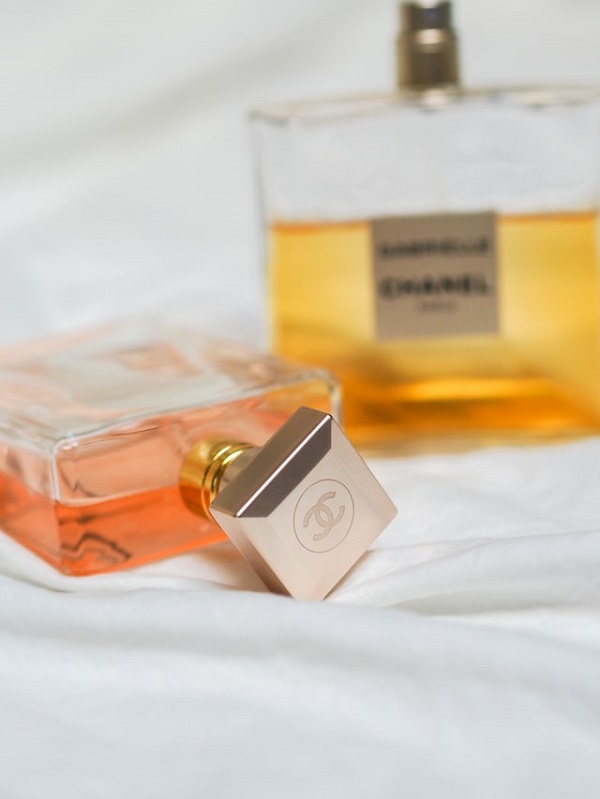
Cosmetic packaging types
Cosmetic packaging types by styles
There are many popular packages in the cosmetics industry, such as
- airless bottles
- pumps
- sprayers
- tubes
- jars
- droppers
- compacts
- and more
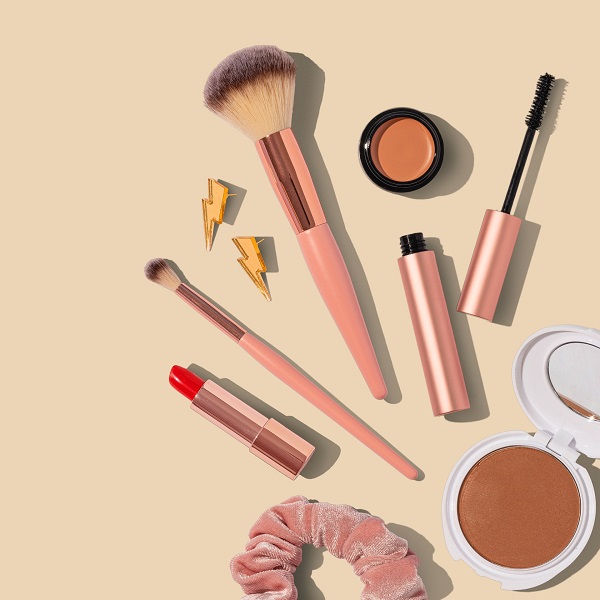
Cosmetic packaging types by materials
When choosing cosmetic packages, we need to consider the materials and how it reacts with our products.
Ingredients of the products may have special requirements for the materials of the package.
For example, most natural green skincare products are full of ingredients like essential oils, fatty acids, natural surfactants, and fruit acids. These ingredients will react with some types of material.
Butters and creams can seep out of a kraft bag, so we probably won’t use kraft wrapping for them. In this case, polypropylene is a more suitable option.
Polyethylene terephthalate (or PET)
This material is common to see in plastic bottles for cosmetics and beverages packaging.
PET provides an oil barrier between the plastic and the internal product. And it prevents chemical ingredients from damaging the plastic.
Moreover, PET is also popular for its appearance, as it looks like glass with transparency. Another reason is, PET can come in various colors. That offers a bunch of more possibilities in cosmetic packaging designs. (We will talk about the design ideas for cosmetic packaging later in this article. Don’t miss it!)
Besides, PET has a variety of “squeezability” from semi-rigid to rigid. And it is very light in weight, hence helps to reduce shipping costs.
If your product contains essential oils, high alcohol content, or other solvents, PET could be the best cosmetic packaging material for it.
PP – Polypropylene Plastic
PP is another popular plastic used in cosmetic packages today.
It remains the choice for various tubes and cosmetic containers because it is BPA-free and 100% recyclable.
Glass
Glass is a green and high-grade cosmetic packaging material, while its cost of shipping and manufacturing is high.
Dark glass jars are perfect for essential oils, serums, vitamin C-rich lotions. It gives the product a premium look and feels. But be cautious about scrubs and bath gels in glass products, as they may be broken in bathtubs and showers.
Metal
Metal cosmetic packaging is good-looking, but it requires a special coating to hold a high percentage of essential oil products. Before you buy metal packaging, you should carefully check if it will rust or break when it contains your product.
Metal lids can damage easily during manufacturing and shipping, so be careful with them.
HDPE
HDPE gets its fame for its durability and strength.
It is highly resistant to most acids and hence suitable for products with solvents.
But it’s not good to use HDPE in products with high essential oils content. That’s because it will react with the EO. Besides, HDPE can be translucent, so you can see your product inside.
Moreover, HDPE is easy to recycle and has a wide range of uses.
Paper-based Boxes
Paper is one of the most common materials used in cosmetics packaging.
As plastic cosmetic packaging is so harmful to the earth.
So, the cosmetic packaging industry pays special attention to this environmentally friendly and sustainable paper packaging.
Similarly, paper-based cardboard boxes are very popular. They are heavy paper stock used for cosmetics products. These boxes are useful for many cosmetic packages.
Meanwhile, shippers prefer to use corrugated boards for logistics services.
More about cosmetic packaging boxes
Corrugated board? Isn’t it the same?
People often feel confused about the corrugated board and kraft paperboard, but they are different types of materials.
The corrugated board consists of three layers of kraft paperboard.
And kraft paperboard is an extremely thick layer of brown cardboard.
Two of the three layers of corrugated cardboard, called liner boards, are the main body of the box. And the remaining layer, which is thinner and made of reinforced paper, is used to make air pockets.
Thanks to these air pockets corrugated boards can gain a good impact resistance.
Thus, the corrugated board is suitable for shipping and handling. The corrugated board has different types of thicknesses and ratings.
Usually, it’s not so common to see packages made of corrugated boards with complex designs like normal cardboard boxes.
Still, it’s easy to print or add designs to them.
Corrugated vs Cardboard boxes
Not that you’ve known the corrugated board and cardboard are different materials.
We believe you’ve figured out the difference. If not, feel free to ask PrimePac : )
So, the next question we need to answer is: Which one is more suitable for your product cosmetic packaging?
Cardboard is a very common choice because you can custom several printings with different types of colors and textures. And it feels more comfortable to touch.
Meanwhile, corrugated boxes are also a good choice.
Corrugated boxes are of widespread use in shipping and wholesale because they have great resilience and resistance. When other boxes are on top of them, corrugated boxes can support, while cardboard boxes are likely to damage.
Also, read Everything about Food Packaging You Need to Know.
Sometimes, it remains difficult for consumers to see the product and get enough information without clear labels on the cosmetic packaging.
Thus, labels on the cosmetic package need to show basic information about the product.
The basic information includes contact information, ingredients, EXP dates, warnings, and instructions. It’s because labels identify the product and its source, and remind consumers of facts they need to know.
And we’re going to dwell more into the cosmetic packaging labels down there.
Cosmetic packaging labels
Labels tell consumers what they need to know about the product which includes how to use the product and where the product comes from. Also, it should list the ingredients and functions of products. Besides, the label must provide contact information about the company and product tracking information. Marking may be considered misleading not only because the label statement is deceptive, but also because the label does not reveal important facts.
Moreover, labels must be easy to read.
We can list as one ingredient for some certain ingredients, such as perfumes though.
And some information can appear only on the secondary package, the outermost package consumers will see directly. But the very important information must be on both the secondary and the inner packages, particularly when the product is prone to misuse.
Make sure the information is correct and accurate
Accuracy of information is still one of the most important factors in cosmetic packaging and labeling regulations.
Although they may not be able to inspect all the products on the market, the government can impose penalties.
Therefore, please be sure to be careful with the labels on the packaging of cosmetics and avoid erroneous violations of laws and regulations.
After all, the manufacturer is still responsible for ensuring the safety of the public’s products.
Avoid putting misleading information on the cosmetic packaging
As well as labels on other industries such as food and beverage.
Misleading information on the package for cosmetics is definitely prohibited.
None of the following information can be misleading:
- name
- address
- ingredients
- storage conditions
- the dates
Besides, we can use abbreviations only if the abbreviated words are clear enough to explain what they stand for.
Also, the text on the package must be clear. So, choosing a reliable supplier like PrimePac in Australia can pretty much help you out with the labeling problems with cosmetic packaging solutions.
When it comes to packaging in small sizes, the text printed on the package might remain too hard to read. For cases like that, we need to use tags with legible text.
Find more about the requirements for food packaging labels in Australia.
Requirements for how to list the ingredients
For components of the product that are 1% or more by volume, we must list them in descending order.
The weight of each component determines the priority of the order. In other words, the heavier ingredients used in the product take precedence.
As for the ingredients that make up less than 1% of the total product, we can list them in any order. Also, if the product involves colorants, we need to show them on the label. There is no special requirement for priority in the order.
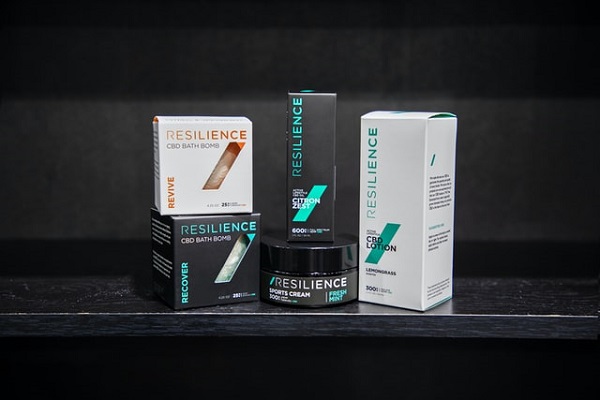
Cosmetic packaging design ideas
It’s time to start designing your cosmetic packaging and labels.
Set your brand design standards
The first step of designing packaging is to set the elements for your design.
You need to consider the following elements.
Style
Before you start designing the packaging, these questions may help you.
- What emotions do you want to bring to your design?
- What personality do you want to embody in your design?
- Do you want a minimalist vibe?
- Looking to be more dramatic or more stylized?
By knowing what style you’re looking for, the rest of your design will be more efficient and targeted. Determining the style at first helps ensure the packaging you create is consistent with your overall design goals.
The style will also help you determine other design elements that you need to consider.
For example, if you are going for a pop art feel, you might need to add some illustrations to your design. If your cosmetic products contain natural elements, natural style is a good choice for your design. And then you might want to add some nature photography to your packaging design.
The point is, when you know the style you want, you can add the most suitable elements to make your design stand out.
Colors
When choosing colors for your packaging, you should choose colors matching your brand personality. Besides, you want something to grab customers’ attention and make your products stand out from the competition.
Attracting your customers is rather important in the highly competitive world of beauty and cosmetics.
Choosing your brand’s color palette is like choosing this season’s must-have eyeshadow palette. You want to stay true and show your brand’s personality.
In the meantime, you want to be a distinct one among the competition.
So, how to choose the right color?
Take pink as an example. Pink is a popular color in the beauty and cosmetics industry. It’s fun and feminine. It is one of the most widely used colors in all makeup products.
But you can’t choose pink, because your goal is to stand out in the market. If you go with pink as the packaging color, it may be difficult to attract customers’ attention, because every cosmetics store has a sea of pink on its shelves.
Now, let’s have a look at some famous beauty and cosmetics brands.
The most recognizable brands use colors as a way to build their brand. When people want to buy purple cosmetics, they think of Urban Decay. Bold black and white are bound to Make Up Forever. The queen of pink is Too Faced Cosmetics.
So, if you want your brand to be successful, you need to do the same thing as those brands.
Choose a brand color palette that not only stands out from the shelves but also builds a strong bond with your brand.
Fonts
The third element you need to consider is fonts.
If you want to have something unique on your brand or something that can instantly attract customers’ attention, you can make good use of fonts in addition to color.
Like color, fonts help your brand jump out of the shelves. Besides, it shows your brand’s personality and conforms to the overall style.
You can study the fonts of some cosmetics brands, such as Urban Decay, Chanel, and Clinique, and find the connection between the font and the style.
One more thing to consider is how the font will look on your packaging. Just remember to make the font easy and clear enough for reading.
Get the important information on your packaging that you want to tell your customers
Next, you should collect all the information and icons that the packaging needs.
Common things on cosmetics packaging include expiration labels, government warning labels, brand copy. Besides, you need an image to show your product is cruelty-free. Additional images and graphics may be useful.
Collect all these things so that you can organize them properly in your packaging design.
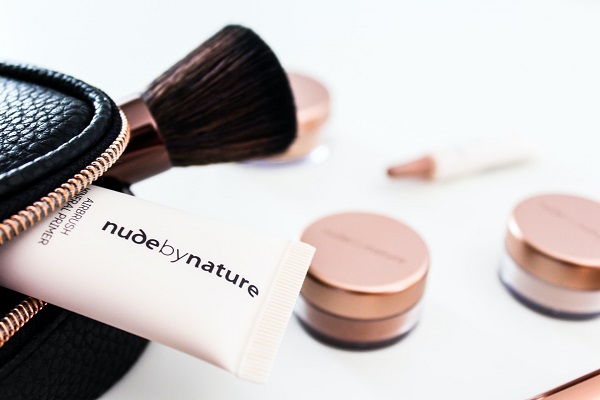
Choose a focal point for your design
Now that you know the ideal type of product packaging, it’s time to think about design.
The first thing you should do is select a touchpoint.
When your customers view your product, your product can immediately “talk” to them. You must deliver a compelling enough message to keep customers in your product.
Otherwise, they will move to another location on the shelf.
So choose the one thing you want customers to know about the product. Whatever you choose, you need to make it visible in the packaging design.
Logo helps build brand awareness.
Through the logo, your customers will know that the lipstick or face cream they buy is yours. Therefore, you should know that the design of the logo is very important. It is best to place the logo front and center.
As for the logo itself, it’s best to add something unique. Do your beauty products contain ingredients that will wow your customers and inspire them to buy your products? It can be a core element of the design.
Focus on the core elements of packaging design to ensure that your key message is being communicated to the customer.
Consider your material and professional printing options
Next comes the selection of packaging materials and special printing options.
There are many options to improve your packaging. But keep in mind that complex packaging can also mean high costs. Different kinds of products have different requirements for packaging. For example, if you are going to use your product in the shower, it is best to use a coated waterproof material.
Other design options can make your packaging look great.
Things such as foil, embossing, or ink with a 3D effect will give your packaging a high-end luxury feel. But they also add to your cost per package.
If you don’t know what options are available or what your budget allows, contact the designer. Then find out which materials and printing options best suit your brand and budget.
How to find out Mr. Right (designer) for your cosmetics packaging design?
To find a good designer, there are 2 common ways.
DIY
DIY is probably still the first choice because no one knows what package design you want better than they do.
This is not recommended in most cases unless you are very confident in the design domain.
By designing your own, you can actually save money. But the design of your cosmetics packaging is so important that it may not be the best place to save money.
Hire a designer
Another approach is to hire a designer to manage the design process for you. You can hire a freelancer or start a design competition.
If you decide to hire a freelancer, it’s best to find someone experienced in cosmetic packaging design.
It would be better if they specialized in the cosmetics industry.
Start designing!
Once your design is ready, it’s time to start designing!
The first step is to review your brand style design with your designer. Then talk with your designer and make sure he knows exactly what you are looking for. After that, you should ask him for a design mock-up. You will receive a concrete piece of packaging before you finalize your design.
When you get the design mock-up, you need to evaluate it and see if it is suitable for your product.
Here are some questions to evaluate the design.
- Will it appeal to my ideal customers?
- Is it clear what this product is?
- Does it help your brand stand out from the rivals?
- Will it be as popular in five years as it is today?
After completing the design, your designer will create your packaging die lines. And you will need to send the files to the printer.
The files include a vector file of your packaging die lines for each product, and Pantone or CMYK color codes.
Print out your packaging design and take your product to the world!
Wrapping things up
There are plenty of opportunities in the beauty and cosmetics packaging industry.
With the right product, the right packaging, and the right design, you can certainly seize the opportunity!
Know more on The Ultimate Guide to Choosing Your Beverage Packaging.
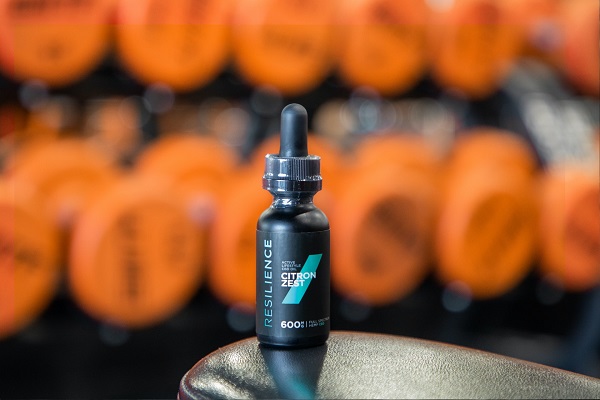
Eco-friendly ideas about cosmetic packaging
Types of eco-friendly cosmetic packaging
Biodegradable Packaging
Brands like coca-cola and Nestle say they will turn to PCR (post-consumer resin) packaging.
Under the influence of consumer-driven, even if the price of biodegradable packaging is slightly higher, the sales also increase.
PrimePac’s biodegradable and compostable packaging solutions end up in landfills or marine waste.
Moreover, the ratio of PCR to raw plastic materials has been increasing to ensure that functionality. And keep the colors within high cycle content.
Reducing packaging is also a real driving force for brands. Many cosmetic companies find ways to reduce the number of packages through better design and lighter parts.
To achieve that goal, PrimePac introduced small bags and make cosmetic packaging solutions as sustainable as possible. And we also provide recycled paper as part of our kraft paper bags. All these solutions are now available in Australia. So, if you’re looking to get an eco-friendly cosmetic packaging solution, don’t hesitate to contact us.
More recently, we have applied technology to print on our normal packaging with eco-friendly ink.
The adoption of that printing technology will not discolor the substrate. Nor will it contaminate or change the chemical stability. And it does not affect the function of the flip or disc top. Plus, they are also compatible with most types of plastics such as PET, HDPE, and PP.
Through extensive testing, we are now able to provide cosmetic packaging solutions compostable and biodegradable in landfills.
It can not only decompose all the cosmetic packaging resins but also leave no microplastic.
Hemp cosmetic packaging
For the topic of compostable and biodegradable packaging, hemp packaging is now a popular talking point.
In the cosmetic packaging industry, hemp has the potential to become a very environmentally friendly choice.
In fact, it is not only for hemp products but also for every kind of cosmetic packaged goods. And the cannabis industry has gradually become an ideal experimental base for this innovative packaging material.
At the Cannabis Packaging Summit, Schmidt said there are really two kinds of plastics: organic and synthetic. He often explains to people that plastics can also be non-synthetic, natural, and plant-based.
Besides, as a member of the bioplastic family, hemp plastic is a special material. And using it to make plastics doesn’t need to change the infrastructure and equipment used to produce petroleum-based polymers. In terms of usability, they have the same advantages as ordinary plastics. However, they are biodegradable, hence less impact on our environment than traditional plastics.
The current situation of hemp packaging today
The 2018 Farm Bill provides a way for marijuana and cannabis to become major agricultural products.
In the future, cannabis will play an important role in the development of biodegradable bioplastics.
Some companies are even developing plastic cannabis as a by-product. However, this only makes sense if cannabis companies want to use by-products to develop packaging solutions for their products. Of course, cosmetic packaging will share the proceeds after that.
As for Mr. Eichner of Sana Packaging, an American firm, he wants to use by-products to make cannabis Packaging.
But at present, the cannabis industry does not provide the consistent infrastructure needed for plastic production. In Eichner’s view, although marijuana and the cannabis industry are growing every year, it’s getting bigger and bigger.
But from a macro perspective, the industry is still small. And its infrastructure is not perfect.
Still, both Everly and Schmitt see huge market potential for sustainable plastic alternatives. Furthermore, they believe that consumer behavior towards sustainable practices will have an impact on this trend. Everly says new buyers’ acceptance of higher levels of packaging has a real impact on the environment.
Nowadays, plastic hemp is becoming more and more popular in the cosmetic packaging market. This is because consumers there tend to use natural products that have less impact on the environment.
For Schmidt, the sustainability and digestibility of cannabis packaging have huge potential.
He believes that every challenge requires a specific solution. In some cases, a digestible product is not necessarily a good thing. They can also cause harm.
Some cases involve child safety. Exposure to the air of certain ingredients in some products can cause safety issues.
Is it an opportunity or a threat?
The acquisition of cannabis by large packaging companies and the cannabis market could affect smaller specialist companies.
After all, smaller companies may not have access to the same technologies, resources, and solutions as larger companies.
But Everly and Schmitt take a different view.
They say the entry of large packaging companies into the industry does not always affect the development of smaller companies. The reason may not be hard to say. Small companies can develop personalized solutions for customers to meet their specific needs, while large companies can produce efficiently.
According to Eichner, the big packaging companies are trying to explore the entire cannabis and cannabis industry.
But he doesn’t expect large corporations to fully join the cannabis and cannabis industry for a while. Until the federal government legalized it, that was not a possibility.
‘The big multinationals that go public are very cautious,’ he said. And they tend to avoid dealing with convicted substances.
But when they do participate, Eichner expects it will benefit certain small packaging companies. The purpose of these big companies, after all, is to make packaging. They can partner with smaller companies to achieve their goals. In this way, big companies can also save almost all their manufacturing costs. Therefore, it is not a bad idea to form partnerships with both large and small packaging suppliers.
But the interest of large packaging manufacturers in building brands for plastic hemp solutions remains an issue.
In the future, we will see a lot of big packaging companies buying cannabis packaging companies. Or partner directly with them to distribute products.
Challenges in hemp packaging including compliance and regulation
Everly said that bags and jars are not so popular nowadays as they used to be.
The government has not prohibited it totally for now. But given the consideration of environmental impact, the barriers to entry could be tougher.
Regardless of the challenging fact, still, big players are entering the cannabis space.
Big packaging enters the cannabis space
Schmitt, a co-founder of the summit, told that the uncertainty of the packaging products has kept “normal packaging companies” from entering into the field.
He estimated that about 80% of hemp packaging comes from its own packaging solutions.
But not from mainstream packaging companies.
Once the product is rescheduled, we should seize the opportunity. This is telling us that this proportion will reverse and grow rapidly, according to Schmitt.
As marijuana continues to move slowly towards legalization, formal suppliers of packaging solutions are no longer rejecting the industry.
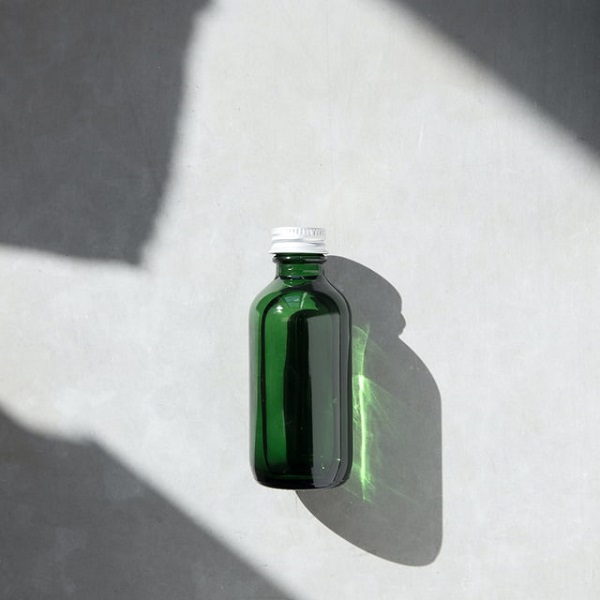
10 Ways to Repurpose Cosmetic Containers
As we all know, how we are in love with organic and natural cosmetics packaging solutions with no cruelty. Meanwhile, we tend to overlook the beautiful containers in our storage boxes. Most of us are looking for ways to reduce our carbon footprints though.
If you’re a make-up fan like us, you’ll know how easy it is to pile up a mountain of cosmetic packaging.
But if we find new uses for these containers, you not only save you money but also protect the environment!
Let us show you how to reuse your old cosmetic packaging below.
#1: Use old lip balm containers to save your bobby pins
You know what? Recycling old cosmetic containers and other types of containers is actually very simple.
For example, do you have old lipstick boxes? And will you easily lose your bobby pins? Well, an old lipstick container will keep your pins inside the space. Sometimes, it’s really helpful especially on hot days when you want to keep the cooler a bit.
So, think twice before throwing your lip balm container away. They can be your bobby pins saver for the other days ^ ^
#2: Turn your compact containers into a jewelry storage box
Do you think it hard to recycle an empty compact container?
In fact, one way to reuse this make-up container is to use it for jewelry storage. Instead of scattering your jewelry randomly and end up difficult to find them back, compact containers just help you out.
Moreover, you can also use them to keep your elastic bands, earrings, and other cute little stuff.
They’re small enough to put in your wallet for the ladies’ night. And big enough to hold the small necessities for an enjoyable journey at the same time
#3: Make vases with perfume bottles
Many people like to collect empty perfume bottles, and the obvious reason is, they are truly beautiful.
And sometimes, just too expensive to give up.
So, for all these reasons, why should we throw them away?
Besides, you can always turn these cute pretty bottles into vases. It is definitely a good way to add value to your home/office decoration.
#4: Make Travel-Sized Containers
Reduce your travel dollar store to resize cosmetic containers for travel. An old face hot pot can carry three ounces of moisturizer.
#5: Create your unique brush holder with shampoo bottles
Shampoo bottles are the most versatile containers. You can extend them easily with a short tap.
So, cut an empty shampoo bottle from the bottom part, say a few inches. Then, blunt the sharp edge with a knife/scoop.
Look! Your distinct and unique make-up brush holder just comes out this way!
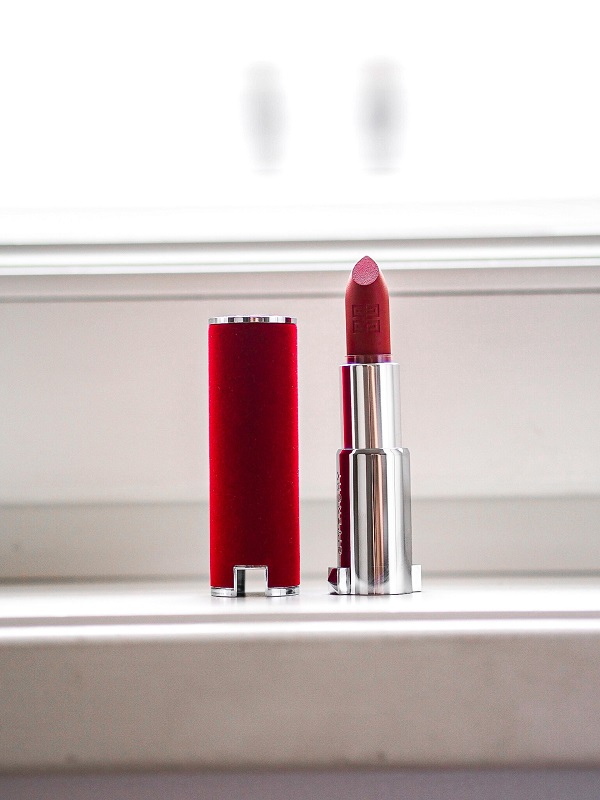
#6: Transform old compact containers to be perfume holders
Have you ever thought that your compact containers can hold your perfume discs? Now, we’re going to tell you how to do it.
And you can do this DIY by the following easy steps:
- tsp beeswax pellets (6 grams)
- 5-40 drops essential oil
- TBSP carrier oil (around 14.5 grams)
- Put oil and beeswax in a glass bowl on a small pan filled with water. Heat it for a while, until you see it melt completely.
- Pour the liquefied oil into a clean and empty container and cool for a few minutes.
- Stir the essential oil gently into the mixture of liquefied carrier oil and beeswax.
As solid perfume solidifies, the fragrance enhances. When using, you rub your fingers on the solid perfume, then apply it to your wrist.
Interesting to know, homemade solid perfume can last for 12 months.
#7: Make a D.I.Y. Sewing Kit with cosmetic containers in large sizes
Our favorite hotel freebies can be beautiful sewing tools. This is because it seems to contain all the sewing tools you need!
And the good news is, you can make your own sewing toolbox freely by reusing the make-up container!
For example, loose powder boxes and even larger eye makeup containers can hold sewing necessities. And that includes:
- small scissors
- several pins
- safety pins
- needles
- threads of various colors
#8: Get your old lipsticks to be pill containers
How could this happen? It’s very easy indeed!
To do so, just simply scrape the remaining pieces of lipstick and then inject it in the daytime.
Compared to those dull cosmetic boxes, using old lipstick can make gorgeous makeup boxes, which are excellent alternatives.
#9: Generate the beautiful plant jars
Cosmetic containers as small as ink cans or even eggshells are perfect materials for making plant jars.
We just need to fill with potting mixture, moss, mini forget-me-nots, or Viola. However, we usually choose plants with fine roots and water in these jars.
Before these tips, you might not ever think your little cosmetic jars could be so useful!
#10: Revive the old domestic containers and create your D.I.Y. skincare portfolio
How to propel your recycling work to the next level? Forget about expensive containers and use what you have.
Think of making your own skin cleanser? For example, homemade apple juice lotion, DIY cleanser, and facial oil moisturizer. Feel free to use your pretty empty cosmetic containers to increase the recovery rate.
Recycle your cosmetic packaging
If you feel little interested in reusing, you can recycle the cosmetic containers!
Strictly speaking, reorientation (adapting to different purposes) is not for everyone. Some containers are not suitable for reuse. For example, those fingernail polish containers are not easily reused due to their toxic properties and harmful chemicals.
So, we can only recycle them.
What are the benefits of recycling? We can tell a bunch here, including:
- reduce waste in landfills
- save energy
- save natural resources
- prevent pollution by reducing the demand for new raw materials
- and more
We can convert the waste into reusable materials by some easy handy recycling jobs.
But sometimes, recycling can remain a huge effort.
Fortunately, some of the world’s best-known brands have already figured this out. Here are some brands whose recycling efforts have raised several levels:
- AVEDA – Aveda works with G2 Revolution, a recycling company. They allow customers to bring Aveda packaging and accessories to the store to recycle. And at least 85% of Avida’s haircare bottles and cans contain completely recycled materials.
- LE LABO FRAGRANCES – offer discount system. If the old customers buy perfume again, they can enjoy a 20% discount.
- MAC – MAC accepts its main package through the back-to-m.a.c. program. When you return 6 MAC primary containers to any MAC counter or Mac cosmetic online. You can get free MAC lipstick. You can choose the color number for this lipstick.
- GARNIER – They work with TerraCycle. Garnier accepts Garnier’s empty bottles (bottles, caps, hairspray tubes, hair gel triggers) and delivers them free of charge.
- TENOVERTEN – This manicure salon works with CalthWe, then reclaims the remaining nail polish bottles, and parts such as plastic caps and brushes.
- CÔTE – A salon in Losangeles, works with Environment Services Inc to recycle nail polish bottles. And the introduction of preferential policies, regular customers can enjoy a 10% discount when they buy again.
- LILAH B – The brand offers each minimum package. This allows customers to send back old beauty products of any brand for free
Tips on Recycling Cosmetic & Makeup Containers
Nowadays, many companies and organizations are willing to reuse and recycle cosmetic containers. Penny & Pine, for example, is an environmentally friendly and sustainable company.
Together with the best brands in the world, our advice is not limited to products. Do other brands you like share the same values?
Here’s how to find your favorite brand and judge if it supports your campaign:
Tip #1: Find out the recycling program by the container’s company
Many of the world’s most famous (and expensive) brands usually offer you free shipping and free gifts.
Well, you can check out their product packaging and website plans, partners, and some other details. And see if these companies have recycling plans.
Tip #2: Recycle those caps
Bottles and skincare products are made of hard plastic, making them difficult to recycle.
That’s why so few people are willing to accept plastic cap recycling programs.
If the company does not accept plastic cap recycling, please send your plastic caps to the bottle cap recycling company.
Tip #3: Clean and wash the containers before putting them into the recycling bin
Cleaning up these containers is just a small act.
However, this small move can play a role in protecting the environment.
Make the world different.
Tip #4: Know more about what you can recycle by asking your recycling company
In fact, you can recycle more than you think! So you have to ask around.
As technology evolves, many recycling programs are looking for more ways to reduce waste in landfills. You only need to make a phone call or do a quick Google search to find out what recycling is available. When we pursue beauty, we don’t have to destroy the environment.
So, please reuse cosmetic containers, provide them with a new rental life, or walk a mile to bring the containers to the recycling bin! You only need such simple steps to protect the environment. This is a good gift we can give ourselves and the environment!
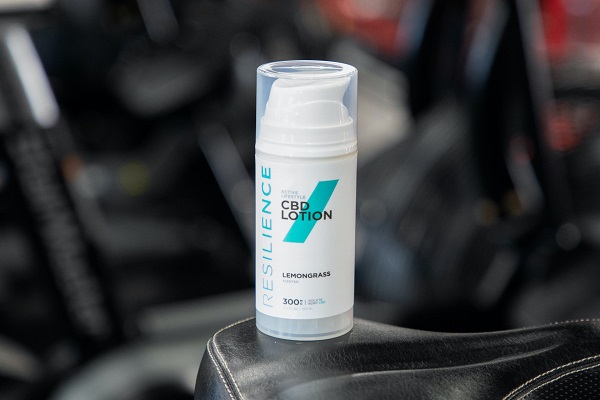
The safety of cosmetic packaging
People’s requirements for new products are getting higher and higher, as evidenced by the work done by the competent authorities, the cosmetics industry, packaging manufacturers, and industry associations.
According to Annex I of the Regulation, the cosmetics safety report must include detailed information about the impurities, traces, and information of the packaging materials, including the purity of the substance and mixture, the evidence that is technically unavoidable in the case of trace amounts of banned substances, and Relevant properties of packaging materials, especially purity and stability.
Plastic packaging for cosmetics does not have to comply with the regulations 10/2011, but the most practical option may be to adopt a method similar to that of food and assume that the raw materials must be suitable for food contact during the packaging design process.
Only when all agents in the supply chain comply with legal requirements can it be possible to guarantee the safety of packaged products.
The packaging in direct contact with cosmetics is called primary packaging. Therefore, in terms of cosmetic safety, the characteristics of the material in direct contact with the product are very important.
Information about the characteristics of these packaging materials should be able to estimate any potential risks.
Relevant characteristics may include the composition of packaging materials, including technical substances such as additives, technically unavoidable impurities, or substances that migrate from the packaging.
Since the most worrying is the possible migration of substances from packaging to cosmetics, and there are no standard procedures available in this field, one of the most widely established and accepted methods in the industry is based on verifying compliance with food contact regulations.
The materials used to make food packaging include plastics, metals, alloys, paper, cardboard, printing inks, varnishes, rubber, organic, glass, and ceramics.
According to the food contact protection framework, these materials and articles are subject to the regulation of 1935/2004, which is regulated by the standard.
These materials and articles should also comply with quality assurance, quality control, and documentation systems, and be manufactured in accordance with Good Manufacturing Practices (GMP).
The requirement in the specification 2023/2006(5) in the framework specification also stipulates some specific material formulation measures to ensure the established basic principles and measures.
The most specific material that has been formulated is plastic, such as No. 10/2011(6) and Xi Suo Lin.
Regulation No. 10/2011 specifies the requirements to be met by raw materials and finished products. The key information for information transmission 10/2011 in the supply chain).
Regulation 10/2011 also stipulates the limit on the number of substances that may be present in the final product or may be released into the food (migration) and stipulates the standard of the test and migration test results (requirements for the final product).
In terms of laboratory analysis, in order to verify compliance with the specific migration restrictions specified in 10/2011, the steps to move the laboratory include:
1. The packaging manufacturer must provide a Declaration of Compliance (DoC) for all plastic raw materials used in accordance with Appendix IV of the specification 10/2011.
2. Perform an overall migration test to verify the scope of the material (if applicable. In overall migration, all non-material substances in the food can be migrated) without identifying a single substance.
These simulant tests differ in quantity and contact form (such as immersion, surface contact, filling).
The total migration limit is 10mg/dm2 contact exposure. In contact with the baby food during the contact period, the amount of the food simulant is 60mg/kg.
3. If necessary, whether to carry out and test the reserved/or specific migration volume to verify the restrictions on the relevant substances.
Specific migration tests are carried out in accordance with the UNE-CEN/TS 13130 standard, as well as internal test procedures developed by the laboratory for the analysis series.
After reviewing the DoC, decide whether it is necessary to conduct a test. Of all the permitted substances, only some have restrictions and/or specifications.
Those with specifications must be listed in the DoC to verify compliance with the corresponding restrictions in the material or final product.
The unit of indicates the specific migration result is the trace amount of the substance contained in the simulant per kilogram.
In order to design overall and specific migration tests, simulants and supply conditions must be selected.
Conclusion
Today, we’ve discussed a bunch of things about cosmetic packaging in this article.
- The importance of cosmetic packaging
- Various types of cosmetic packaging
- Cosmetic packaging labels
- Design ideas for cosmetic packaging solutions
- How to make cosmetic packaging more eco-friendly
If you like it, don’t forget to share this article with your friends. And keep your eyes on our latest blogs.
